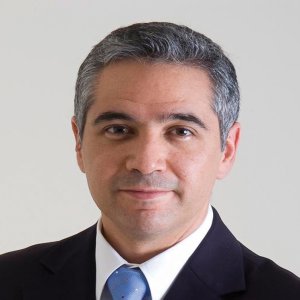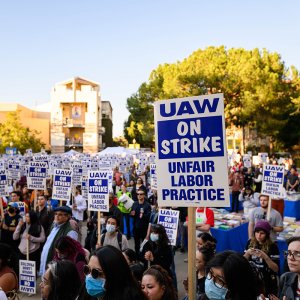Intervention Needed to Tackle Used Tire Misuse

STORY INLINE POST
The global tire market is expected to see a yearly rise of 4.3% over the next three years, reaching 2.9 billion units by 2017, according to data from the Freedonia Group. Although this rise will be led predominantly by developing countries in the Asia-Pacific region, demand will also increase in Europe and Northern America. The US will continue to be the world’s second largest market for tires, accounting for 13% of global demand by 2017. Despite certain limitations to growth within its internal market, Mexico’s proximity to the US places its tire industry in a strong position. Mexico has a developed OEM and replacement tire market, as well as strong demand in the heavy vehicles segment due to the high prevalence of trucks and buses on the country’s roads. The Mexican tire market is dominated by global industry giants and five companies have production sites based in the country: Pirelli, Bridgestone, Continental, Cooper, and JK Tornel.
Andellac is the Mexican association of tire distributors, established over four decades ago and tasked with coordinating and communicating the development needs of the sector. The association’s 3,000 members include all major tire producers, along with key players from the country’s distribution network. Andellac’s Director General Raúl Castillo Arteaga, elucidating the recent dynamics of the local tire industry, explains that, “The automotive market has changed radically in all sectors, but the tire sector in particular has seen exponential evolution. In 2012, 33 million replacement tires were sold in Mexico, reflecting an 8 million net increase in just eight years. However, in that same timeframe, the increase in tire sales to OEMs only went from 17.5 million to 20 million.”
The association is working on three major pillars to drive growth in Mexico’s tire industry. Its first aim is to help business owners who need help to adapt to new technology, improve their understanding of the operation of new complex machinery, implement sound business strategies, engage in thorough environmental practices, and practice efficient inventory management. Secondly, the association is working to establish business networks that will connect suppliers and distributors. Castillo Arteaga points out that big differences exist between tire production and distribution. “Insofar as distribution, the profit margin has diminished by 50% in the last ten years. If distributors think that selling tires is going to be enough to run a business, they are wrong. They need to evolve from being basic tire shops into service centers. A service center can sell spare parts ranging from suspension and brake systems to ancillary services, with the ideal profit equilibrium being 50% tires sales and 50% spare parts and ancillary services.” The final pillar for the association is to act as a facilitator between the government, the private sector, and all relevant associations. “The most informed people are the ones that make the best decisions, and therefore we aim to keep the industry well-informed of relevant events as they happen,” says Castillo Arteaga.
Unsurprisingly, challenges in the tire segment mirror those in the wider vehicle segment, with Castillo Arteaga explaining that the illegal importation of used tires into Mexico presents a major hurdle. “The trucking sector has a major shortage of tires, leading to an amparo for the importation of about 1 million tires with the aim of providing raw materials for the rubber industry,” says Castillo Arteaga. However, according to Andellac’s research, these tires are actually directly being re-used on cars, creating a detrimental effect on market share, road safety, and the environment. “Tires are not renewable and while a new tire will last about four years, a used imported tire will only last three to four months. What we are essentially doing is accumulating waste in our country. There is also a lack of regulation regarding the informal selling of tires, and while there are laws surrounding this they are not enforced effectively,” he explains.
One way of tackling this is to renew second-hand tires for use in the general car market. The federal government recently commissioned a proposal on the potential uses for used tires from the National Rubber Council, which sought out the opinions of Andellac and SEMARNAT. Castillo Arteaga explains that “we have proposed that a used tire in good condition can undergo specific processes to be renewed completely and resold for general use. With the technology that is now available, a used tire reupholstered on time is as safe as a new tire.” Tire manufacturers have indeed invested billions of dollars into research and established that a tire can be renewed up to six times. According to Andellac’s data, Mexico currently has an index of 0.75 when it comes to renewed tires, meaning that only 75% of tires produced in Mexico are renewed. “To put this into perspective, the US has an index of 1.5, while countries in Europe have an average of 2.5. Even Latin American countries like Brazil have an index close to 2.0,” explains Castillo Arteaga. In his opinion, rubber should be re-used in the same way as PET and aluminum. “If we can find other uses for the rubber, used tires can go from being a nuisance to a lucrative business opportunity.” Rubber can be compacted and used for road safety barriers, a use that has already been adopted in a number of countries. Another possibility is to follow Europe’s example, where tire rubber is often mixed with concrete to create a specific kind of tarmac. “Rubber can also be used as a temperature insulator, while overall tire waste is very useful for renewable projects because it protects against moisture and many other elements,” says Castillo Arteaga.
Rubber’s natural resistance presents a challenge, however, as machines able to cut and compact it are very expensive. For this reason, Andellac believes that a government incentive is needed to encourage investment. However, the government agency responsible for this maintains that there cannot be an economic incentive for an industry that does not actually yet exist. Andellac is therefore petitioning Congress for the rubber re-use industry to be included as an official sector with the Treasury, enabling the association to then petition for an incentive. “The Calderón administration wanted to levy tax on every tire sold for re-use, which would actually act as a disincentive for the sector. Fortunately, our proposal has been received with enthusiasm by the current administration and we are confident that we will see progress,” says Castillo Arteaga. To support this aim, the association is also launching a large campaign in collaboration with the public and private sectors to educate consumers on the negative impact of black market tires and to encourage purchases through authorized sales agents.




















